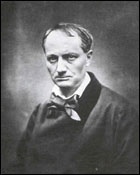| |
 |
|
|
As Lynch is influenced by Baudelaire’s portraits
of the lesbian lover, his depiction of love is also deeply
inspired by the surrealist concept of love. As with his interpretation
of the lesbian lover as a figure of modernity, Lynch is stimulated
by surreal concepts and figures. While helping to sustain
the legacy of surrealism, he also demonstrates a self-reflexivity
and personal style which allude to, play with and sometimes
transform the qualities of the surreal.
For the surrealists, woman is the surreal sex. Rupturing
the bourgeois, linear narrative, women are more attuned to
the unconscious. They speak wondrously and enigmatically.
They are akin to the strange and accidental. Women in Mulholland
Drive are arguably the most interesting and marvellous
sex. They are identified with the surreal. In Mulholland
Drive, Rita has lost her identity. She is indeed engendered
by the accidental. Betty meets her by bizarre chance. When
Betty wonders where the amnesiac Rita was going early in the
primary dream narrative, she repeats in amazement :
“Mulholland Drive. Mulholland Drive. That’s where I was going.
Mulholland Drive”. Sexually provocative, Rita is surreally
alluring and allows Betty to seduce her. (It could also be
argued that it is Rita initiates their love-making). As a
ravishing blank slate, she is a masculinist Hollywood fantasy.
Further, we are led by Diane’s dreaming. She leads us to the
strange after-hours club Silencio, that place beyond Hollywood
time and space. It is Rita who introduces us to the unusual,
occult club and strange and moving scene which ruptures Lynch’s
narrative. As Camilla, she is unattainable. She remains an
enigmatic body. Representing pure desire and mystery, she
is also an essential, poetic surrealist figure. The more discursively
dominant figure of Betty/Diane also manifests surreal attributes.
The narcissistic Betty cannot be easily deciphered. Her real-life
and professional role-playing give her a strange, dynamic
mobility. She incorporates surreal qualities such as “un
mépris du risque, un refus de composition” [“an absolute
disdain for risk, a refusal of structure”] (28). Surreal
women hallucinate, convulse and faint. Diane sees the spectre
of her love and is finally tortured by tiny hobgoblin figures
of the old couple who came with her to Hollywood. Apparently
overcome by tragedy, the singer Rebekah Del Rio, the crying
woman of Silencio faints before the recorded song ends. The
altering, unfulfilled figures of Betty/ Diane and Rita/Camilla
reveal a surreal understanding of character. In Manifeste
du surréalisme, Breton identifies the romantic, marvellous
conception of character as surreal. Particularly referring
to the figurative character of Mathilda in Lewis’ The
Monk, Breton writes : “C’est moins un personnage
qu’une tentation continue” [“Less a character than
a continous temptation”] (29). Likewise, women in Un
Chien Andalou and L’Age d’Or possess a perambulatory
quality. Moreover, surreal characters transform. In Mulholland
Drive, Naomi Watts is transfigured. Betty and Diane
appear entirely distinct. The bright blonde Betty is absolutely
altered. She becomes a bloodless, spiritless other and finally
dreams herself a grotesque vagrant. The sorcerous power of
love and the mythic malevolence of Hollywood transfigure and
mark her.
|